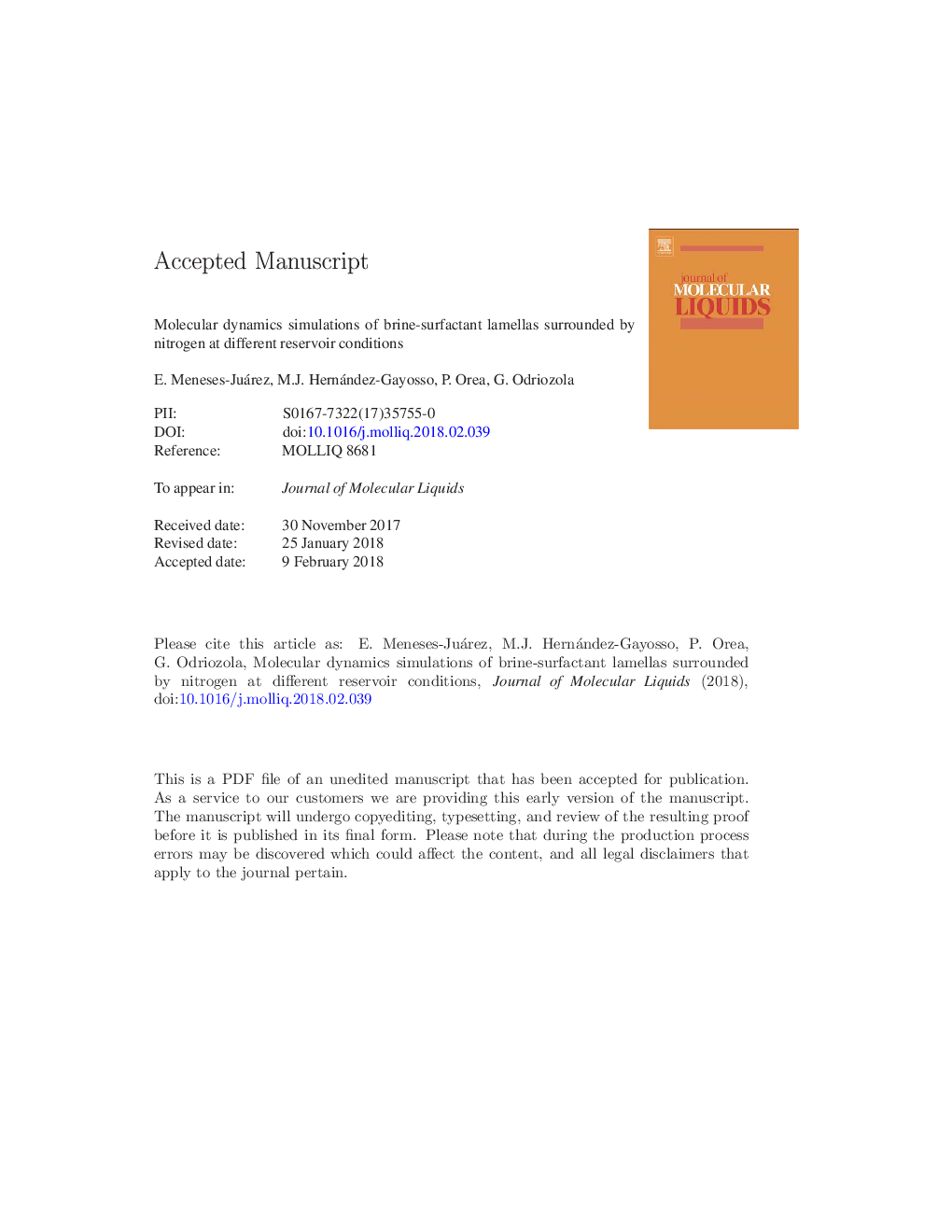| Article ID | Journal | Published Year | Pages | File Type |
|---|---|---|---|---|
| 7842918 | Journal of Molecular Liquids | 2018 | 26 Pages |
Abstract
In this work the stability of a thin brine lamella (13% by weight sodium chloride in water) is studied when surrounded by surfactant (sodium olefinsulfonate), under different burial depths and in the presence of nitrogen. We are assuming a temperature gradient of 30â¯K/km and a pressure gradient of 150â¯atm/km and covering up to 6â¯km. As a reference, the same system without surfactant is also studied. The density profiles obtained for the case without surfactant show that nitrogen easily penetrates the lamella at depths greater than 1.0â¯km. Conversely, the system having the surfactant keeps nitrogen out of the lamella for depths up to â5.0â¯km. We found that there appears a separation of charges along the direction perpendicular to the interfaces which, we think, promotes the lamella affinity for water and hinders its drying. This process, acting at the molecular space time level, may compete with the large scale gravitational draining. At 6â¯km of burial depth, we observed nitrogen getting into the protected lamella, which in turn provokes a dramatic decrease of the surface tension. We think this points out a superior limit for the withstand of the lamellar structure, and hence, the foam stability.
Related Topics
Physical Sciences and Engineering
Chemistry
Physical and Theoretical Chemistry
Authors
E. Meneses-Juárez, M.J. Hernández-Gayosso, P. Orea, G. Odriozola,
